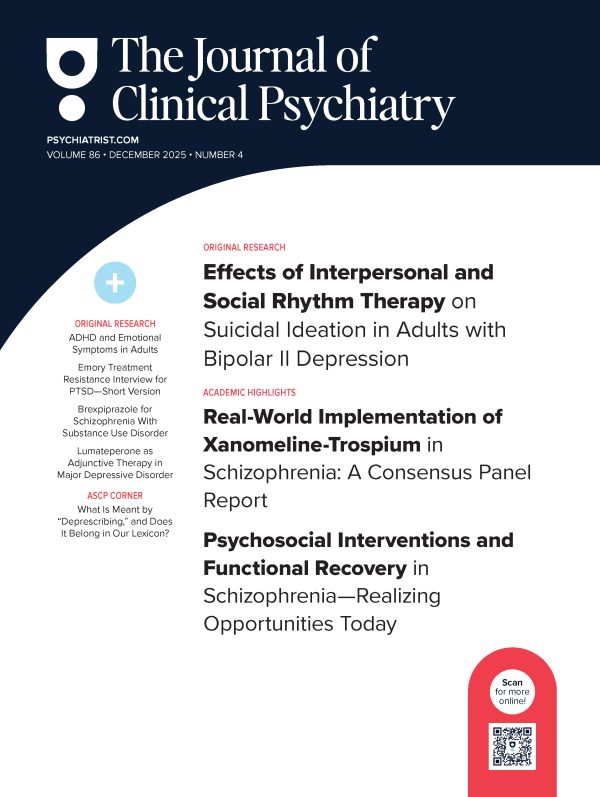Method: The study was performed in 2 stages. We screened for the presence of Internet addiction among 455 children (mean ± SD age = 11.0 ± 0.9 years) and 836 adolescents (mean ± SD age = 15.8 ± 0.8 years) using Young’s Internet Addiction Scale. These subjects also completed a measure of psychopathology for comparison between addicted and nonaddicted subjects. Sixty-three children (13.8%) and 170 adolescents (20.3%) screened positive for Internet addiction. Of these, 12 children (male, N = 9; female, N = 3) and 12 adolescents (male, N = 11; female, N = 1) were randomly selected for evaluation of current psychiatric diagnoses. Structured interviews used were K-SADS – PL – K for children and SCID-IV for adolescents. Data were collected and interviews were conducted from August 2003 through October 2004.
Results: In the child group, 7 were diagnosed with attention-deficit/hyperactivity disorder (ADHD) not otherwise specified including those with subthreshold levels. Mean DuPaul’s ADHD Rating Scale scores were more than 20% higher than the mean in Korean children for 6 subjects. In the adolescent group, 3 subjects had major depressive disorder, 1 had schizophrenia, and 1 had obsessive-compulsive disorder.
Conclusion: By structured interview, we found that Internet-addicted subjects had various comorbid psychiatric disorders. The most closely related comorbidities differ with age. Though we can not conclude that Internet addiction is a cause or consequence of these disorders, clinicians must consider the possibility of age-specific comorbid psychiatric disorders in cases of Internet addiction.
Please sign in or purchase this PDF for $40.00.


